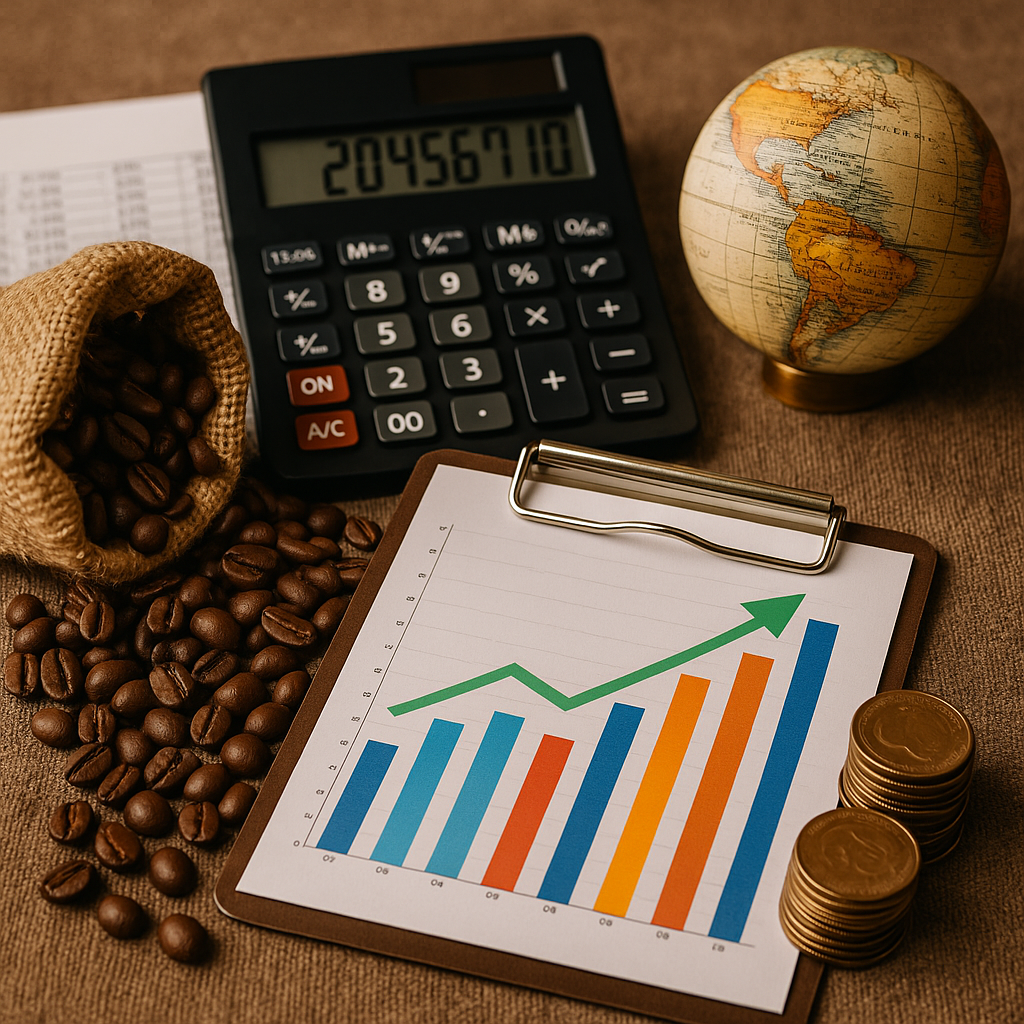Coffee is one of the most traded commodities in the world—second only to oil. But while most people are familiar with paying for a cup at a café, few understand how the price of coffee is set at a global scale. Behind every bag of beans is a complex web of markets, speculation, production costs, and global demand.
So, how exactly is the price of coffee calculated? Let’s explore the key factors that influence what coffee is worth on the world stage—and how that translates to what you pay at the store.
What Is the Global Coffee Market?
The global coffee market is essentially the system by which coffee is bought and sold internationally. It operates through commodity exchanges, where coffee contracts are traded like oil, sugar, and wheat.
There are two primary types of coffee:
- Arabica: More delicate, aromatic, and higher quality. Makes up around 60–70% of global production.
- Robusta: Hardier, more bitter, higher in caffeine. Often used in instant coffee or espresso blends.
These coffees are traded on different exchanges:
- Arabica is traded on the ICE (Intercontinental Exchange) in New York.
- Robusta is traded on the London International Financial Futures and Options Exchange (LIFFE).
Prices are listed in cents per pound (for Arabica) or USD per metric ton (for Robusta).
The C Price: The Global Benchmark for Arabica
When people talk about the “price of coffee,” they’re often referring to the C Price—the commodity market price of Arabica beans set on the ICE exchange.
The C Price fluctuates daily based on trading activity. It’s affected by:
- Supply and demand
- Weather in producing countries
- Speculation by investors
- Global economic trends
- Currency exchange rates
This price serves as the baseline for commercial and specialty coffee contracts, to which premiums or discounts are added.
How Is the Final Coffee Price Determined?
The final price a roaster or importer pays for coffee isn’t just the C Price. Several layers are added:
1. Differentials
These are adjustments based on origin, quality, or processing method. For example, Colombian coffees may have a positive differential (premium), while others may be priced below the C Price.
Differentials consider:
- Reputation of origin (e.g., Ethiopia, Kenya)
- Bean size, grade, and cupping score
- Processing (washed, natural, honey)
- Certifications (organic, Fair Trade)
2. Logistics and Export Costs
Costs to move coffee from the farm to port include:
- Dry milling
- Bagging and packaging
- Transportation to export warehouses
- Export documentation and fees
These vary significantly by country.
3. Freight and Insurance
Shipping green coffee across oceans involves:
- Ocean freight rates
- Container handling fees
- Insurance for damage or loss in transit
Global shipping crises (like during COVID-19) can double or triple these costs.
4. Import and Roasting Costs
Once coffee reaches its destination:
- Importers and brokers charge service fees
- Roasters incur costs for roasting, quality control, and storage
- Packaging and distribution further add to the cost
5. Retail Markup
When sold in stores or cafés, coffee gets a final markup. This includes labor, rent, branding, and profit margins.
A coffee bag that cost $3.50/lb at origin may retail for $15–20/lb depending on the supply chain.
What About Specialty Coffee Prices?
Specialty coffee doesn’t follow the commodity market as closely. Prices are often negotiated directly between buyers and producers, based on quality and long-term relationships.
This model, called direct trade, rewards producers with higher and more stable prices.
In the specialty segment:
- High-quality microlots can sell for $4.00 to $8.00+ per pound FOB (Free on Board)
- Auction coffees or Cup of Excellence winners can reach $20 to $100+ per pound
- Cupping scores above 85 points typically earn price premiums
This pricing model aims to make coffee production more sustainable and ethically rewarding.
Factors That Influence Coffee Prices Globally
Let’s break down the main forces that influence daily coffee prices:
1. Weather and Climate
Droughts, frosts, or heavy rain in Brazil, Colombia, or Vietnam can reduce supply, pushing prices up. Brazil’s 2021 frost led to a major price spike in Arabica.
2. Pests and Disease
Outbreaks like coffee leaf rust (roya) can destroy harvests and reduce supply.
3. Currency Exchange Rates
Since coffee is traded in USD, a weak local currency (e.g., the Brazilian real) makes exports more attractive, increasing supply and potentially lowering prices.
4. Global Demand Trends
As demand grows in countries like China and South Korea, competition for high-quality beans increases, raising prices.
5. Speculation and Investment Funds
Hedge funds and traders buying or selling coffee contracts can influence short-term price volatility, independent of actual supply and demand.
How Does This Affect Farmers?
Unfortunately, most smallholder farmers don’t set their own prices. When prices drop below the cost of production, they may:
- Struggle financially
- Abandon coffee farming
- Switch to other crops
- Produce lower-quality coffee
That’s why stable and fair pricing models, like Fair Trade or direct trade, are so important.
Final Thoughts: A Price With Many Layers
The price of coffee is more than just a number on a screen. It reflects a complex system of market dynamics, global logistics, quality metrics, and human effort.
Next time you buy a bag of coffee, take a moment to think about everything behind it: farmers risking their harvests, traders watching the C Price, and roasters choosing carefully. Behind that price tag is a story of hard work, climate, and global connection.
By understanding how coffee is priced, we become not just better consumers—but more thoughtful supporters of one of the world’s most beloved beverages.
